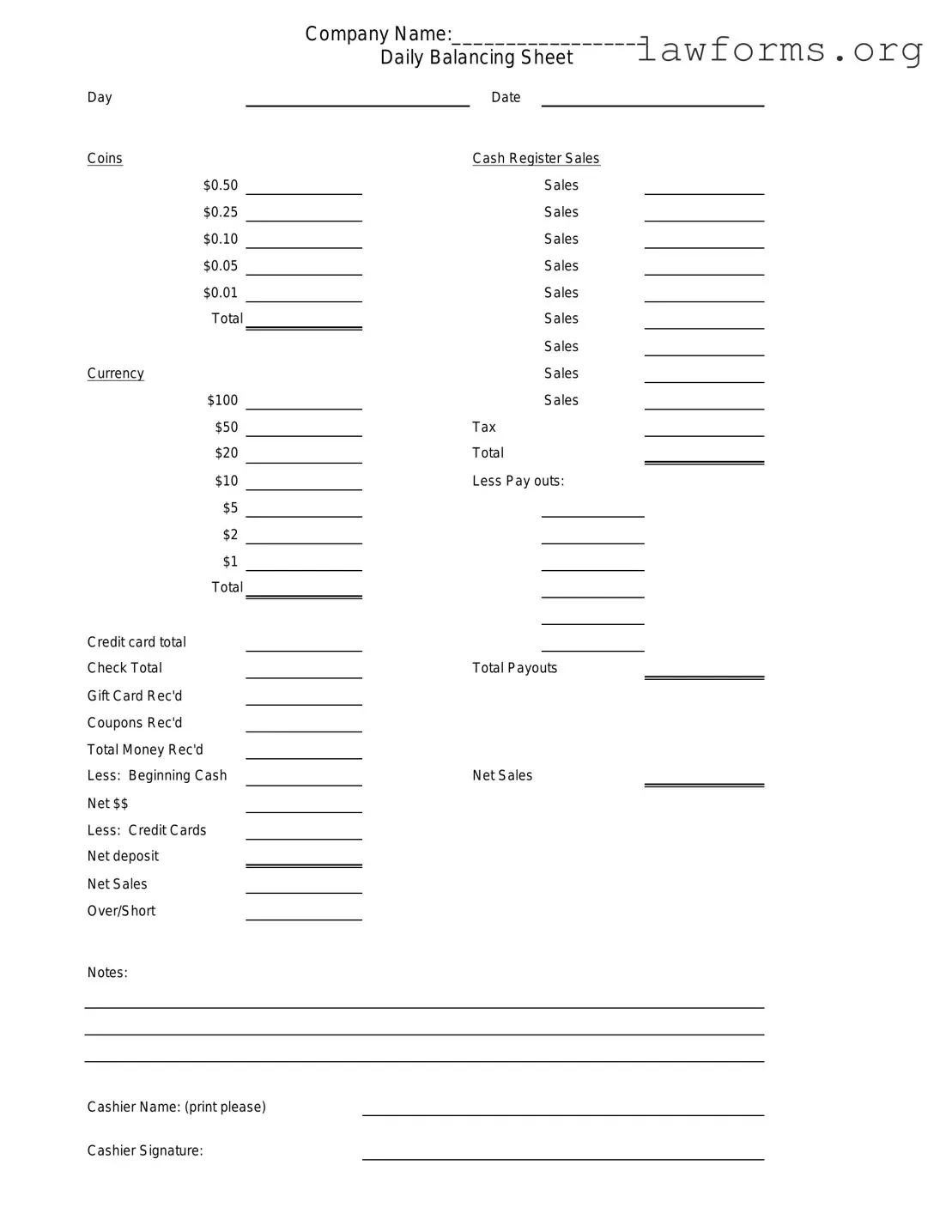Fill Out a Valid Cash Drawer Count Sheet Template
The Cash Drawer Count Sheet is a vital document used by businesses to track and verify the cash in their registers at the end of a shift or business day. This form helps ensure accurate accounting and can prevent discrepancies in cash handling. To maintain financial integrity, it’s essential to fill out this form accurately—click the button below to get started.
Customize Document Online

